By selecting your itinerary in advance, our platform uniquely allows you to view boats that can deliver selected tinerary with full cost transparency, including fuel etc..
Beşiktaş, one of Istanbul's historic neighborhoods, sits right in the heart of the city. With the magnificent view of the Bosphorus, it blends historic structures with the energy of modern life. This neighborhood is a hub of cafes, restaurants, boutiques, and entertainment venues that will capture everyone's interest. Istanbul, with its marvelous waterways and having served as the capital of three different empires - Roman, Byzantine, and Ottoman, is truly special. Moreover, one of the most intriguing features of Istanbul is its spread across two continents. It's the only city in the world where you can travel between continents quickly and economically. Just imagine, you can cross from Europe to Asia in just 10 minutes. In Beşiktaş, you'll find beautiful historic docks that are visually stunning.
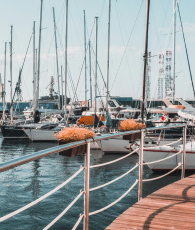

One of the historic buildings in Beşiktaş is now home to one of the city's most beautiful five-star hotels, Shangri-La. In the past, it served as a tobacco warehouse and the ITT Schaub-Lorenz factory. Initially, the building was constructed as a test workshop before the Demirağ family established an aircraft manufacturing factory in the 1930s.The family, credited with completing 1,250 km of Turkey's 10,000 km railway network, was given the surname 'Demirağ' by Atatürk in recognition of this achievement.
Right next to the hotel is the Naval Museum, which houses a very valuable collection. Among the must-see exhibits, especially in its newly built modern building, are 14 imperial boats reflecting the splendor of the Ottoman Empire.
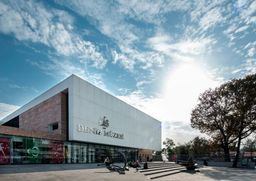
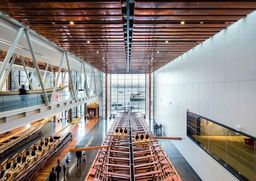
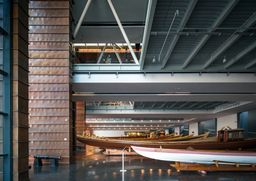
In the midst of the hustle and bustle of Beşiktaş Square, quietly standing is the Sinan Paşa Mosque, commissioned by the Ottoman Navy's admiral, Captain Sinan Paşa, in 1553 and built by the renowned architect of the time, Mimar Sinan. Its red-and-white striped exterior and central dome supported by hexagonal columns create a magnificent aesthetic. The mosque's fountain is one of the most unique and beautiful examples of 16th-century Ottoman craftsmanship.
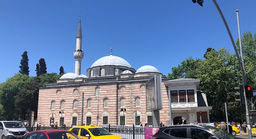
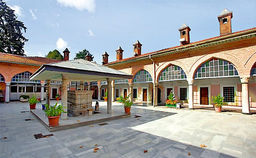
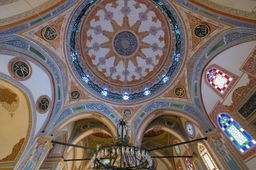
The Küçük Mecidiye Mosque, located at the lower entrance of Yıldız Park across from the Çırağan Palace, was commissioned by Sultan Abdülmecid in 1848. Designed in the Baroque style by the Balyan Family, this single-minaret mosque was part of a complex that included a madrasa, school, and caravanserai. The walls and domes of the mosque, adorned with flowers made of white plaster, were constructed using soil brought from the Kaaba.
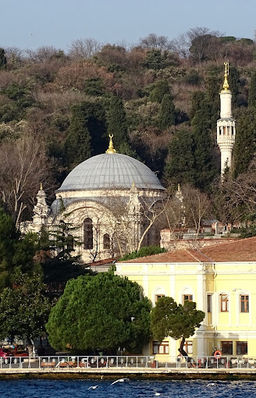
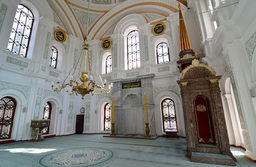
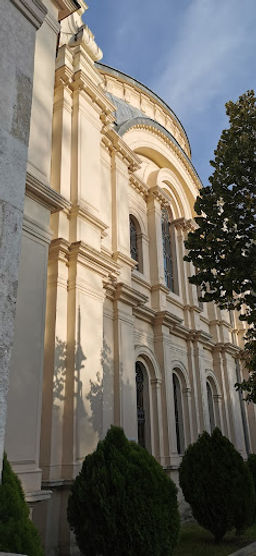
The Etz Ahayim Synagogue, located on the main street, was built by the Jews who settled in the area in the mid-17th century. It has suffered damage and been rebuilt several times during the famous fires of Istanbul. The name of the synagogue, one of the finest legacies of the neighborhood's cosmopolitan structure, means 'Tree of Life'.
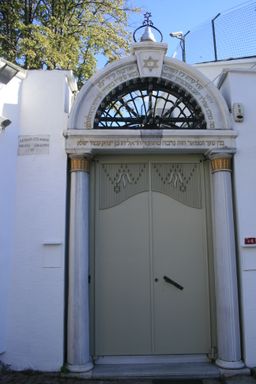
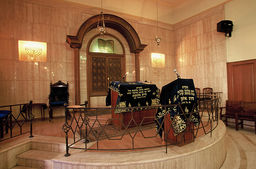
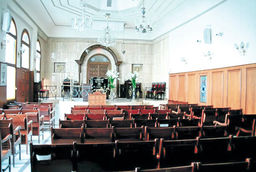
Located at one of the busiest traffic points, the hamam, one of the four works designed by Mimar Sinan in Beşiktaş, is known as the first structure built after the settlement of Turks in Ortaköy. Today, serving as a cultural center under the administration of Beşiktaş Municipality, the building is believed to have been commissioned by Hüsrev Kethüda, the steward of Vizier Sokollu Mehmet Pasha, in the 1570s.
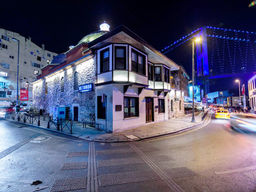
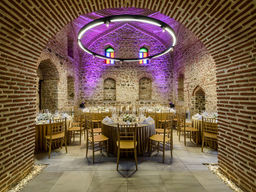
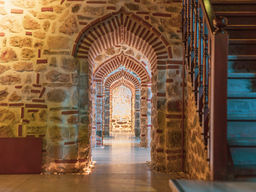
The perhaps most striking structure of Ortaköy, where hints of its old cosmopolitan days are hidden in every corner, is the Ortaköy Mosque, which creates the feeling of sitting right on the water. Its original name is Büyük Mecidiye Mosque. Watching the play of light entering through the tall windows of this mosque, one of the finest examples of Baroque style, is a mesmerizing experience. The imperial lodge located on the left side of the mosque was the place where sultans rested before or after the Friday prayer.
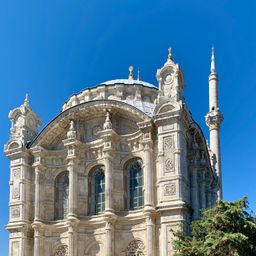
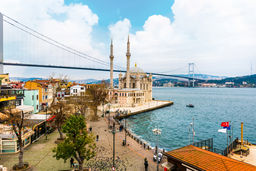
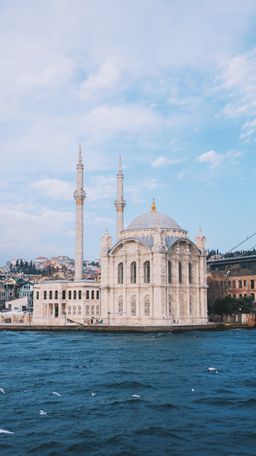
The history of the Ayios Fokas Greek Orthodox Church, hidden behind the shops in the bazaar, actually dates back to the Byzantine period. This area was named after the monastery complex of the same name that existed here at that time. The building, distinguished by its bell tower, was damaged during a major fire in the neighborhood during the reign of Sultan Ahmet III. By the decree of Sultan Abdülmecid, a new church was built in the same location, hence the name of the supporting sultan inscribed on the church door.
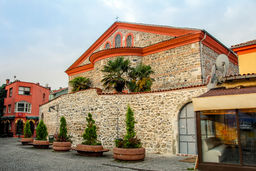
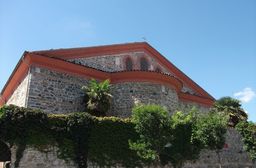
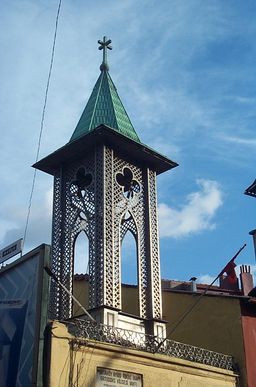
In the mid-19th century, during a period when the influence of the West began to be strongly felt, Dolmabahçe Palace is considered a sign of the Ottoman Empire breaking away from its past and traditional ties. The name of the palace comes from its location. Previously, this area was a bay serving as a harbor, but during the reign of Sultan Ahmed I, the land was filled with soil brought from the stadium area to create a park and a riding ground for the summer palace in Beşiktaş.
The palace was designed by Garabed and his son Nigoğos Balyan from the Balyan family. Wonderful works belonging to this family can be found along the Bosphorus in Istanbul. The construction began in 1843 and was completed in 1856. The main building had 285 rooms, 43 halls, and 6 bathrooms. A 600-meter-long quay was built to allow guests to arrive by sea. The main entrance gate of the palace is located next to the Rose Garden. When sultans arrived by land, they entered through this gate, while when they arrived by sea, they entered through the gate in the middle. The four-story clock tower, 27 meters high and built in 1890 by Sarkis Balyan for Sultan Abdul Hamid, combines neo baroque and empire styles.
The most important and highest section of this palace, witnessing many important events in Ottoman history as well as the early years of the Republic, is the magnificent Ceremonial Hall. The Ottoman dynasty would receive congratulations and hold special celebrations in this hall. On the right side is the largest part of the palace, the Harem section, while on the left side is the Selamlık section. Sultan Abdülmecid's signature can be seen in the harem and selamlık sections. Dolmabahçe Palace was the place where Atatürk spent his last days and passed away on November 10, 1938. The palace remained open for three days to show respect to the public. Afterwards, Atatürk's body departed from Sarayburnu towards his eternal resting place in Ankara.
Next to the palace, there is the former Crown Prince's Residence, which now hosts the Painting Museum and the Istanbul Office of the Presidency.
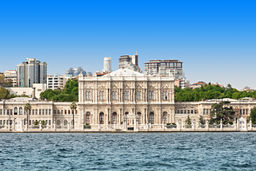
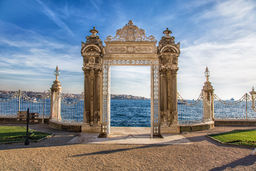
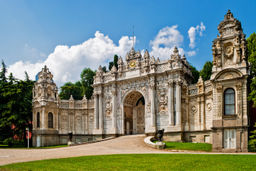
The Çırağan Palace stands as one of the magnificent palaces bestowed upon Istanbul by the Balyan Family in the second half of the 19th century. The gardens extending behind the palace now form one of the city's breathing spaces known as Yıldız Park. Inside the palace, there are many exclusive areas ranging from ballrooms to meeting rooms.
The name Çırağan Palace is derived from the word "çerağ," meaning "light-filled" in Persian. Adjacent to the palace, Çırağan Kempinski serves guests in a modern building. Behind the palace lies the tomb of Yahya Efendi. Yahya Efendi was a close friend of Sultan Süleyman the Magnificent. Built by Mimar Sinan in the 1570s, the tomb has become a place where sailors returning safely from voyages express their gratitude. Some members of the dynasty, including one of the daughters of Sultan Süleyman, rest in the cemetery of the tomb.
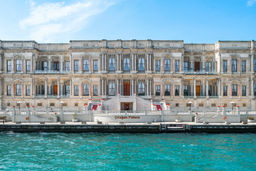
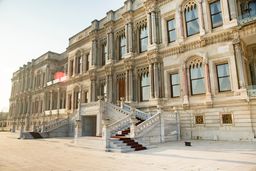
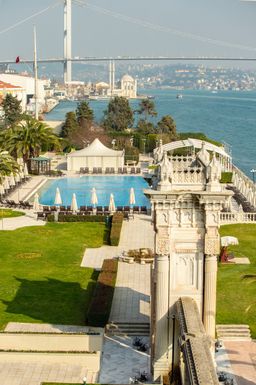
The Kabataş area, renowned for some of Istanbul's finest hotels, is located at one of the city's junction points. On the other hand, Tophane has recently gained vibrant colors with Galataport bringing activity to one side and the neighborhood's art venues in Tomtom and Çukurcuma on the other.
The square building you see right above the neighborhood is the Atatürk Cultural Center. After being closed for a long time, the center reopened on October 29, 2021, with its architecture resembling its old structure, reclaiming its central position in Istanbul's art scene. Watching Istanbul's breathtaking views from the restaurants inside is a delight! The tallest building you see right next to it holds an important place in the city's memory, The Marmara Hotel. It also boasts a delightful restaurant on its top floor. The building between these two, adorned with red and white colors, is the German Consulate. Located on Gümüşsuyu Avenue as you descend from Taksim towards Dolmabahçe, this magnificent building on your right has been used as an embassy building in the past.
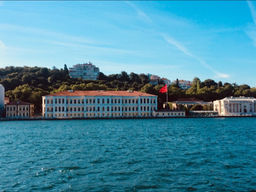
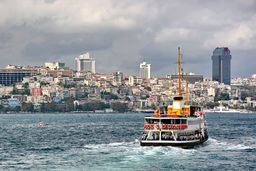
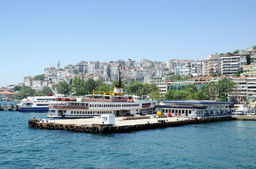
When you arrive at Dolmabahce, you're first greeted by Dolmabahce Mosque. This structure, built in the Baroque style, is one of the city's most beautiful works. Its original name is Bezmi Alem Valide Sultan Mosque because it was commissioned for Bezmi Alem Valide Sultan, the mother of Sultan Abdülmecid, who built Dolmabahce Palace.
Just behind it, you can see Süzer Plaza, which also houses the Ritz Carlton. Behind this skyscraper are the old barracks buildings, which are now used as campuses of Istanbul Technical University.
Continuing from Süzer Plaza, you'll find Turkey's first 5-star hotel, Hilton. The hotel, which is one of the symbolic structures of the city, was opened in 1955 with the participation of many famous figures, as depicted in old Istanbul photographs and etched in everyone's memory. Right in front of it is the Vodafone Arena belonging to Beşiktaş Football Club. Regarding the stadium's unique location, the famous Brazilian footballer Pele once said, 'Here, while playing or watching a match, you can also watch the opposite continent.
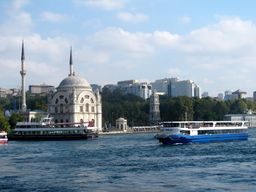
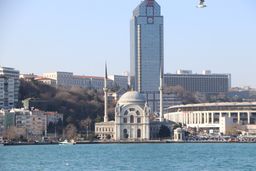
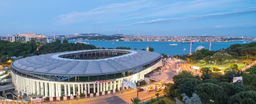
The historic pier in Beşiktaş, built in the style of First National Architecture, dazzles with its ornate exterior adorned with tiles. In the square just behind it, you'll be greeted by the modest tomb and statue of Admiral Hayreddin Barbarossa. Known by Europeans as 'Red beard,' this famous sailor is said to have given his name to the neighborhood according to one legend. Some say that Beşiktaş got its name because Barbarossa anchored his galleys to five stones found here. Another legend suggests that the name originated from the bringing of a piece of the cradle of Jesus to this place.
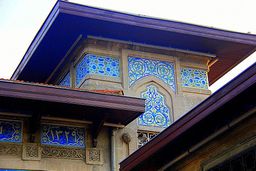

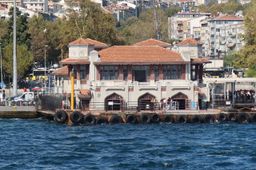
On both sides of the Çırağan Palace, you'll notice magnificent palaces built for other members of the dynasty. Among the buildings where the selected members of the Ottoman dynasty resided, the closest to Beşiktaş is the Atik Paşa Coastal Palace, while the farthest is the Hatice Sultan Waterside Mansion located just below the bridge. The first palace we encounter after the Çırağan Palace is now used as a Vocational and Technical Anatolian High School. Among the palaces belonging to Galatasaray University, the most beautiful one houses the university's foreign language department. Adjacent to the yellow-colored university building is one of the city's finest high schools, Kabataş Boys High School. Sultan Abdülaziz passed away in 1874 in the mansion currently used as Kabataş Boys High School.
Before reaching Ortaköy, you'll come across an intriguing building with eight columns in front of it, which is the Feriye (Redoubt) Barracks dating back to the 19th century, formerly responsible for the security of the palaces. Today, it houses a wonderful restaurant bearing the same name.
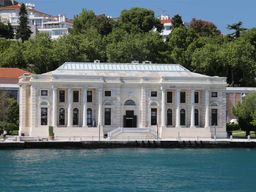
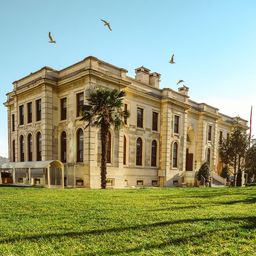
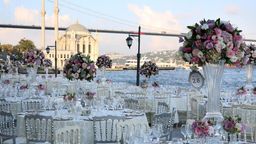
After passing the Ortaköy Mosque, you will come across the Esma Sultan Mansion, built for Esma Sultan, the daughter of Sultan Abdulhamid I, who married Çerkez Mehmed Pasha. Esma Sultan, who was the sister of Sultan Mahmud II, is said to have led a very colorful life and left behind many grieving men. The mansion was initially used as a school, then as a tobacco warehouse, and before turning into ruins in a fire in 1975, it served as a coal depot. In the 1990s, the remaining four walls were covered with glass and steel construction, and today it is used for events and functions.
Adjacent to Esma Sultan Mansion, the three white mansions, formerly known as Armaggan Bosphorus Suites, belong to Sarkis Balyan, the rightmost of which. In the 1860s, Sultan Abdulaziz, wanting to reward Sarkis Balyan for his work at the Beylerbeyi Palace, allocated this land to him.

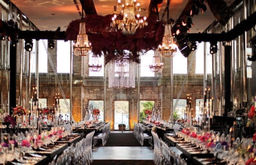
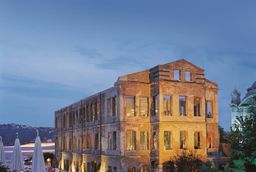
As we move from the palace district towards the villages along the Bosphorus, we begin to see the "Pearls of the Bosphorus," as the yalıs (waterside mansions) are often called. These yalıs along the Bosphorus are constructed as elegant wooden buildings with docks and boat houses where boats can moor. The term "Yalı," equivalent to the Ottoman "Seahouse," is derived from the Greek word "Aegialos," meaning "seashore." The urbanization of the Bosphorus area began during the Byzantine period with monasteries and fishing villages. Especially after the Tulip Era, pearl-like yalıs were lined up along the Bosphorus necklace. Most of those that have survived to the present day date back to the 19th and 20th centuries.
One of these is the splendid white Naime Sultan Mansion. Nearby, just below the Bosphorus Bridge, lies the Hatice Sultan Mansion in its green splendor. Hatice Sultan was the grandmother of the renowned author Kenize Murad. Guiding Kenize Murad through Istanbul and introducing her to the places where her mother's family lived is among the cherished memories of my guiding career. These structures, known as the "Hanım Sultan Palaces," will serve as hotels following extensive restoration.
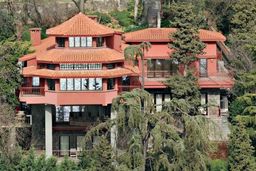
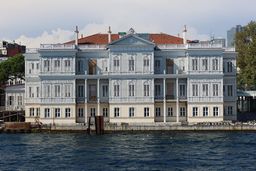
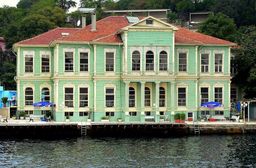
The first bridge connecting two continents was opened on the 50th anniversary of our Republic. Construction of the bridge, built between Ortaköy and Beylerbeyi, began in 1970 and was completed in 1973. Following the Republic Day, on October 30, 1973, it was inaugurated as the "world's fourth-longest suspension bridge" at the time. The Bosphorus Bridge, which is 1074 meters long and 65 meters high from the sea level, had its official name changed to the "July 15 Martyrs Bridge" in 2016 in memory of those who were martyred during the July 15 coup attempt.
Behind the first bridge, you'll see the red-colored pagoda-style building, the Bruno Taut House. Bruno Taut was a prominent German architect who settled in Istanbul after fleeing the Nazi regime. Taut, who later became a professor at the current Mimar Sinan Fine Arts University, is known for his works such as the Ankara University Faculty of Language, History, and Geography building and the Trabzon High School. He also designed the catafalque for Atatürk's Ethnography Museum, where Atatürk's body was placed. Designed overnight, the catafalque became Taut's last work after his death on December 24, 1938.
The pink building next to it was formerly used as a hospital and is now used as the headquarters of the Alarko company.
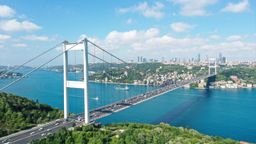
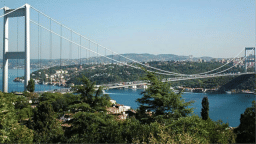
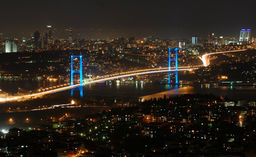
Do not be deceived by the current green appearance of this charming district, lying between the Cemil Topuzlu Park on the coast and the Şeyhülislam Grove stretching along the slope. Only the name of a bus stop remains to remind us of the past of Kuruçeşme, which was once used for storing sand and coal: the Coal Distribution Stop!
Cemil Topuzlu, who gave his name to the park on the coast, was one of the former mayors of Istanbul. You will remember the name Cemil Topuzlu from the Harbiye Open Air Theater.
The source of the district's current name lies in the name Koruçeşme. Next to the Tezkireci Osman Efendi Mosque, there is the Köprülü Nurse Fountain, built in the 17th century. In fact, in the past, the district was a region with plenty of water flowing from its fountain and lush greenery. But over time, as the fountain dried up and the greenery diminished, Koruçeşme became Kuruçeşme!
From here, when you look directly across, you can see the highest point of the city, Çamlıca Hill. Çamlıca Mosque, the largest mosque in Turkey, is also located here.
At the top of Kuruçeşme, you will see one of the largest flags of Turkey. This flag, a symbol of the conquest of Istanbul by the Ottomans in 1453, covers an area of 1453 square meters.
As you continue towards Kuruçeşme Park, the structure that will catch your attention by the sea is the Mandarin Oriental, a rather ostentatious hotel.
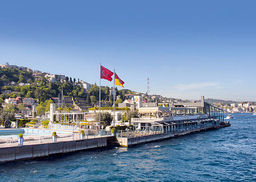
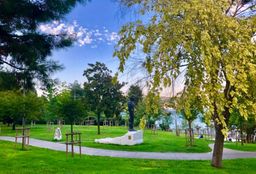
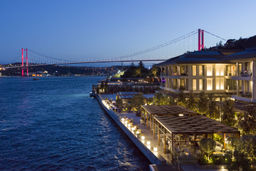
In the history of Kuruçeşme, it is known that many Armenian and Greek families once lived there. One of the remaining places of worship from those times is the Holy Cross Armenian Church. Constructed by Garabed Balyan in 1881 on the site of another church that was previously built, this rectangular-shaped church was made using stone and brick. In the same street where the Ayios Dimitrios Church once stood, there was a Clergy School, which was later moved to Heybeliada. A tunnel within the church leads to one of the most unusual sanctuaries in the city, the Ayios Sotiros Holy Well. For centuries, dripping water has led to limestone deposits on the walls, giving visitors the feeling of being in an intriguing cave upon their first encounter.
At the juncture where Kuruçeşme and Arnavutköy merge, behind high walls, stands the Church of Hagios Ioannis Prodromos, distinguished by its round wooden dome.
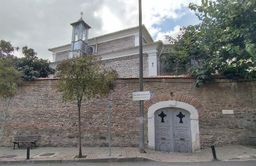
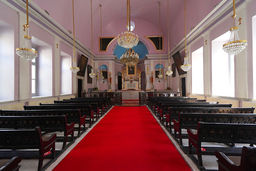
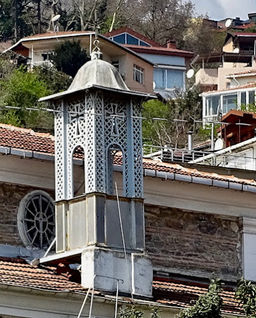
In the Bosphorus, there are a total of two small islands you will encounter. One is the island on which the Maiden's Tower is located, and the other is this island, bearing the name of Galatasaray Sports Club. Galatasaray Island was given to the architect Sarkis Balyan by Sultan Abdulhamid II as a reward for his successful work on the Esma Sultan Mansion and Çırağan Palace. The architect constructed a two-story mansion on the island and conducted his physical studies there.
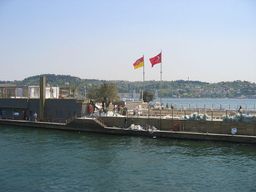
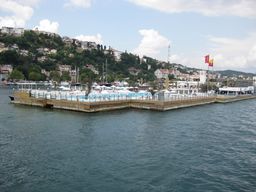
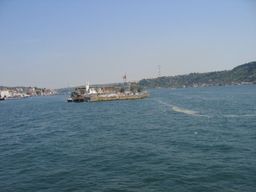

Go out on the town
Transfer boats to take you to the attractions!
Answered



















































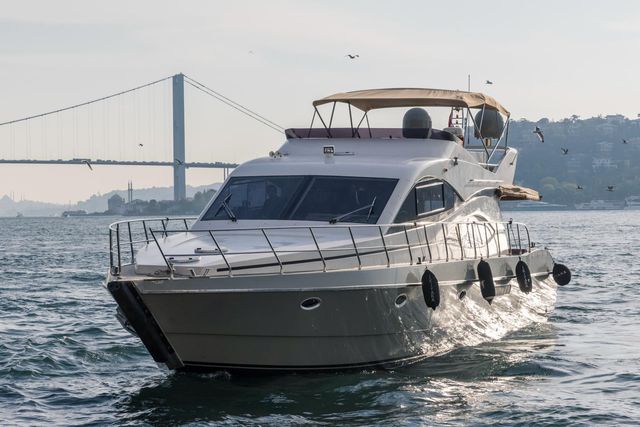
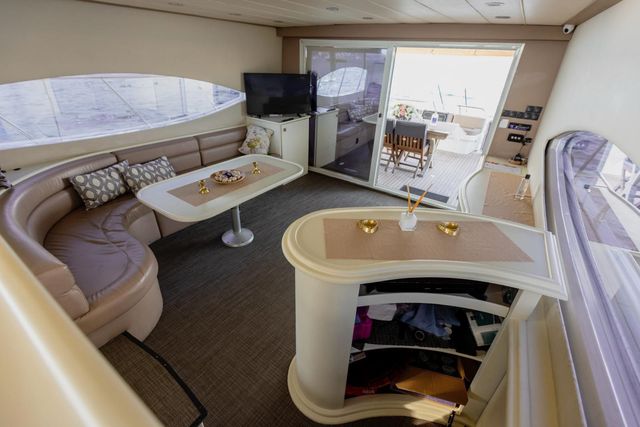
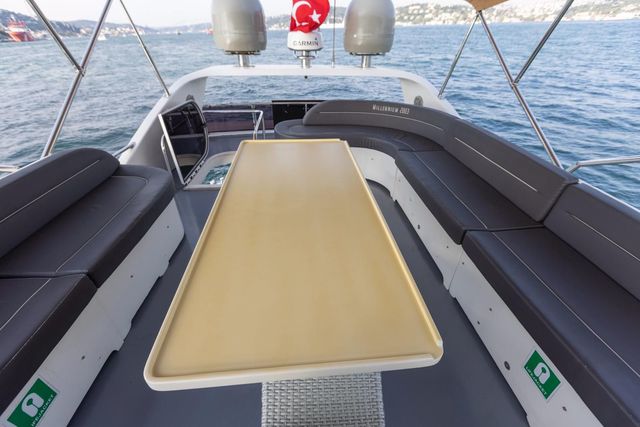
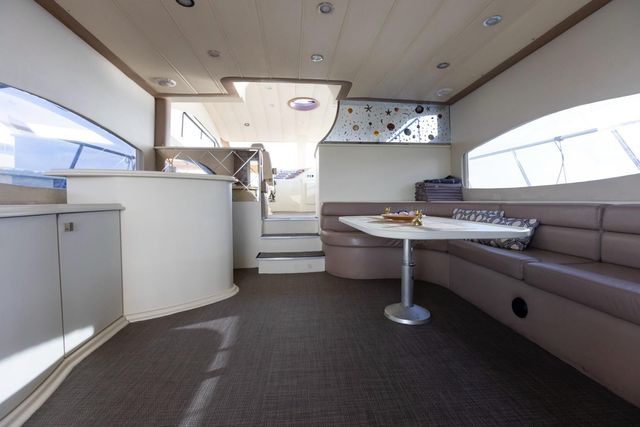
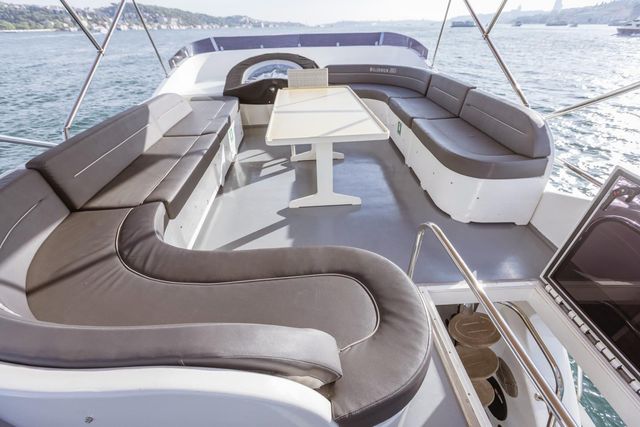
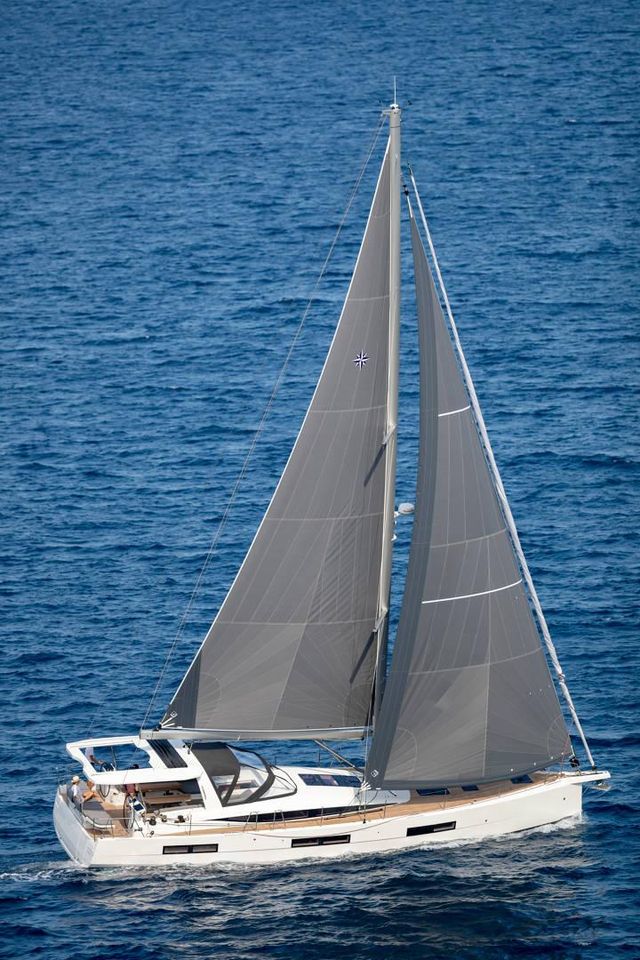












































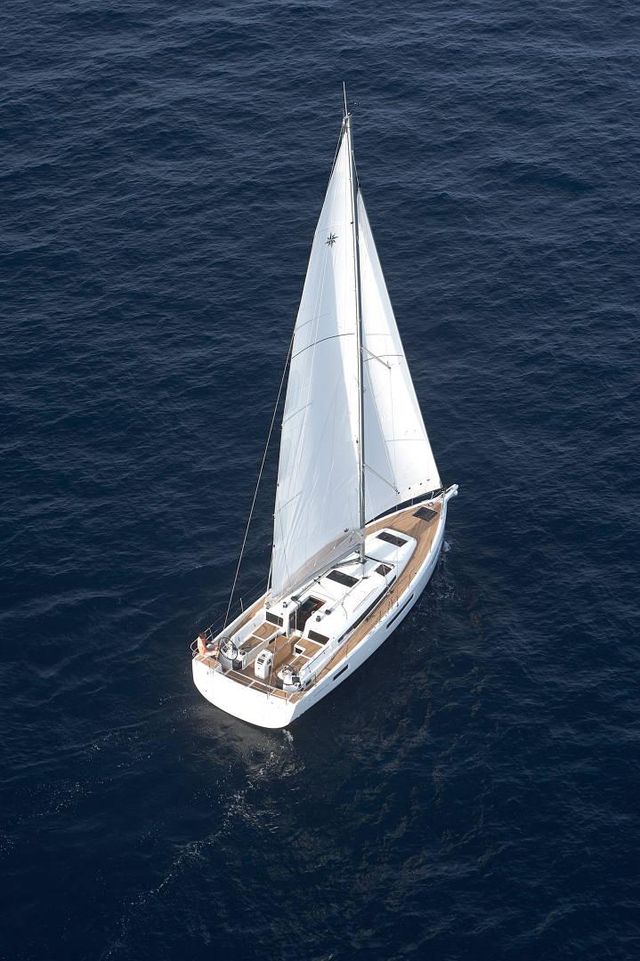





























-1706528520243.jpeg?tr=w-640)
-1706528519713.jpeg?tr=w-640)
-1706528520829.jpeg?tr=w-640)
-1706528521036.jpeg?tr=w-640)
-1706528521779.jpeg?tr=w-640)
-1706526883976.jpeg?tr=w-640)
-1706526880367.jpeg?tr=w-640)
-1706526882138.jpeg?tr=w-640)
-1706526882297.jpeg?tr=w-640)
-1706526882310.jpeg?tr=w-640)
-1715092043075.jpeg?tr=w-640)
-1706527825977.jpeg?tr=w-640)
-1706527826026.jpeg?tr=w-640)
-1706527826214.jpeg?tr=w-640)
-1706527826292.jpeg?tr=w-640)

-1716388254486.jpeg?tr=w-640)


-1716388251295.jpeg?tr=w-640)
-1716388251355.jpeg?tr=w-640)





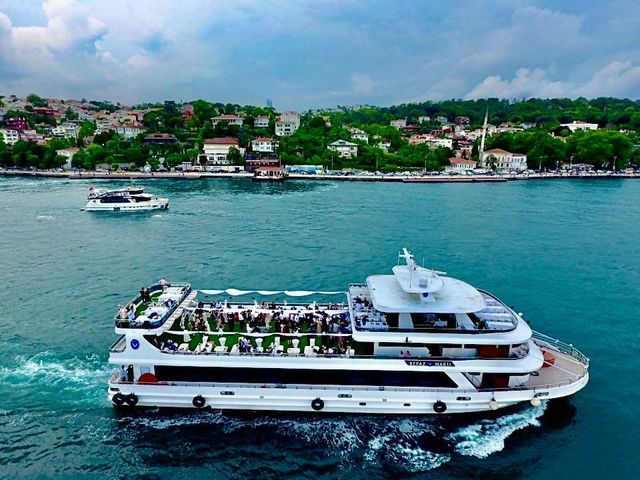
-1715083722119.jpeg?tr=w-640)
-1715083722435.jpeg?tr=w-640)
-1715083722465.jpeg?tr=w-640)
-1715083722561.jpeg?tr=w-640)










-1718190702044.jpeg?tr=w-640)


-1718190310409.jpeg?tr=w-640)

-1718187965142.jpeg?tr=w-640)
-1717408508944.jpeg?tr=w-640)




-1718287582024.jpeg?tr=w-640)

-1718287583009.jpeg?tr=w-640)

-1715091590702.jpeg?tr=w-640)
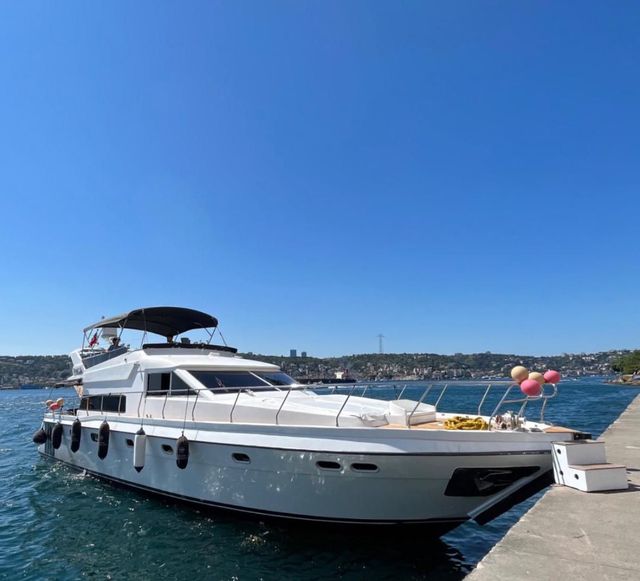
-1715091590397.jpeg?tr=w-640)
-1715091590409.jpeg?tr=w-640)
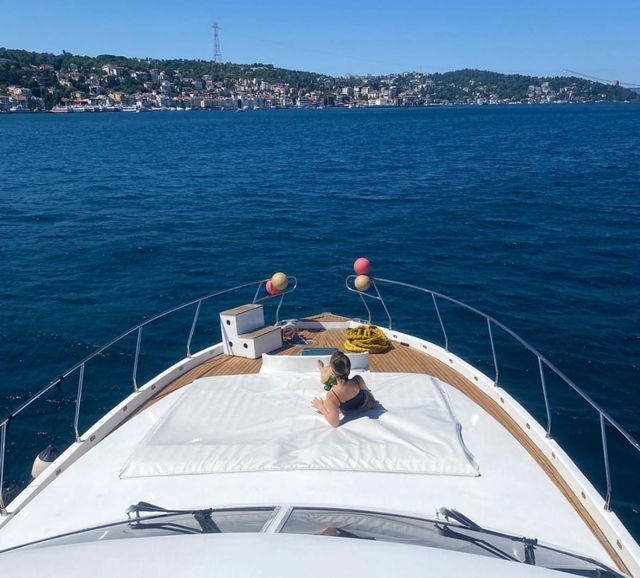
-1715091034160.jpeg?tr=w-640)
-1715091034114.jpeg?tr=w-640)

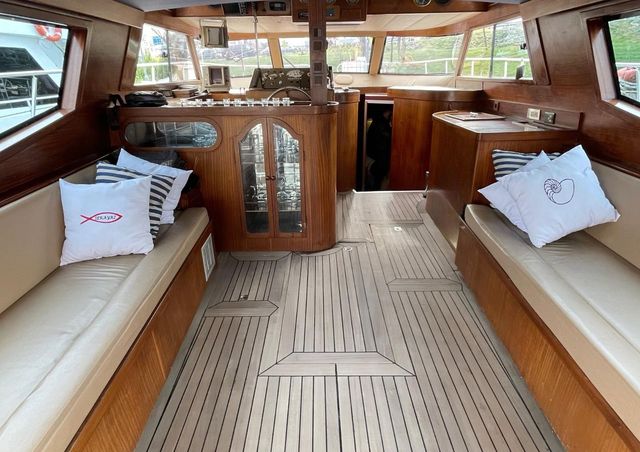
-1715091034511.jpeg?tr=w-640)

-1715090566437.jpeg?tr=w-640)
-1715090566695.jpeg?tr=w-640)

-1715090567014.jpeg?tr=w-640)
-1706529149094.jpeg?tr=w-640)
-1706529146753.jpeg?tr=w-640)
-1706529146979.jpeg?tr=w-640)
-1706529147825.jpeg?tr=w-640)
-1706529149037.jpeg?tr=w-640)